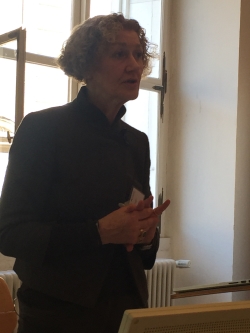Dear Readers
On February 27, 2020, we had the pleasure of presenting Erich Schweighofer with the Festschrift "International Trends in Legal Informatics" during his "IRIS - International Legal Informatics Symposium" in Salzburg.
Erich Schweighofer is one of the key figures of legal informatics in Europe and worldwide.
The title "International Trends in Legal Informatics" was chosen to honor his rich output as a university lecturer, editor of scholarly anthologies, and, above all, as a scholar and author at the interface of law and informatics.
In good Schweighoferian tradition, both German-language and English-language contributions are combined in the Festschrift. Like the work of Erich Schweighofer, the contributions in this volume show an enormously wide range of content. This ranges from Good Old Fashioned AI and Law, legal information and legal language to the regulation of technology, copyright law, data protection law and international law.
For a fuller appreciation of the honoree here, please see the Preface in this issue. The entire issue/festschrift is freely available here.
I would like to thank Erich Schweighofer, among others, for his many years of faithful support of the journal "Jusletter IT - die Zeitschrift für IT und Recht" as co-editor and, in particular, my colleagues Walter Hötzendorfer and Christoph Tschohl for their great commitment as co-editors of the Festschrift for Erich. What would a "liber amicorum" be without the friends who have invested time and spirit in the appreciation and work of the jubilarian? Many thanks to all of you for your great commitment!
I would like to express my sincere thanks to the publishing team for their prudent and careful supervision of the publications.
Today, we are publishing the Festschrift digitally, but it is also available for purchase as a book. On the book page you will find more information about the book, the jubilarian, the authors and editors.
We are very much looking forward to further exciting years of scientific discourse with Erich Schweighofer - ad multos annos.
For the editors:



 Jusletter IT
Jusletter IT 
